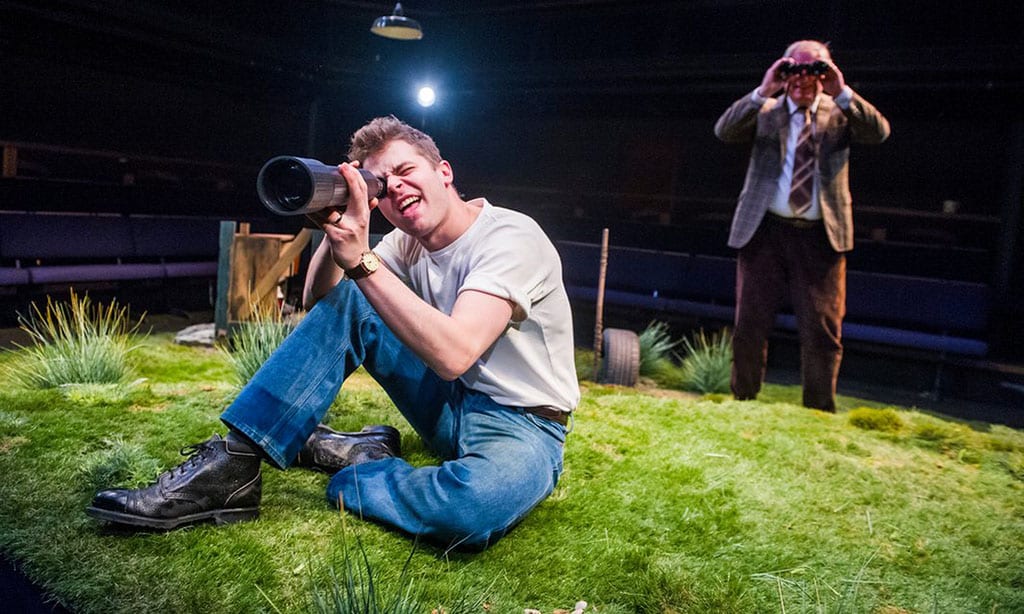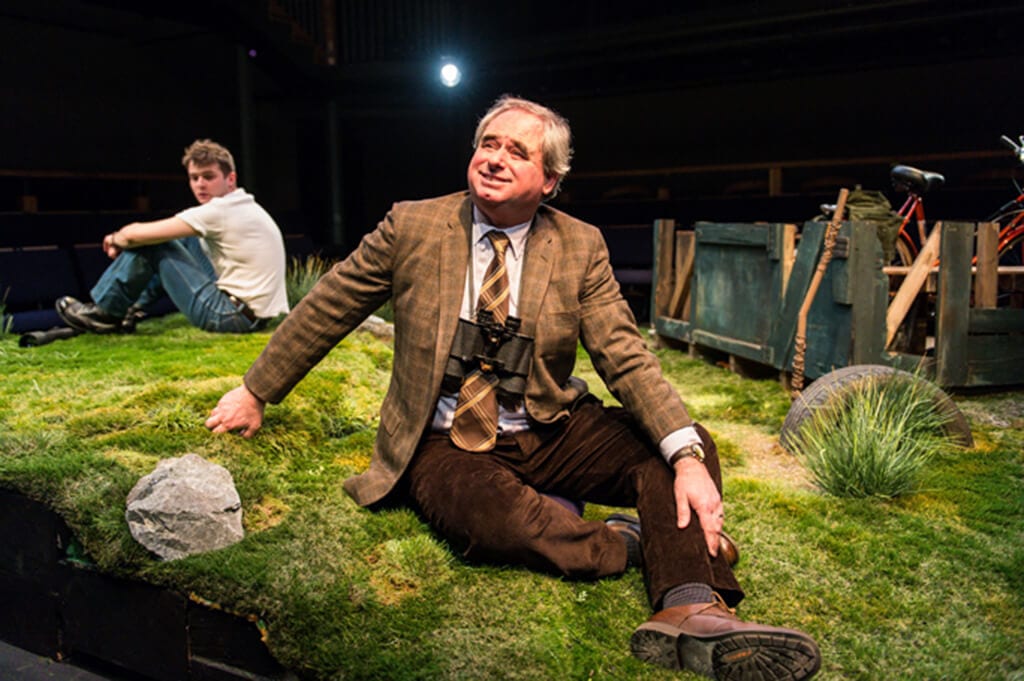This play would be extremely unlikely to have a hit run in the West End. (I wrote that partly to provoke someone into proving me wrong.) It tells several stories (which are interlinked) without having anything you might want to call a plot. And, on the whole it proceeds quietly.
Nevertheless, it provides an engrossing ninety minutes of theatre. It is set on an unfrequented spot at the mouth of the River Tees, south of Hartlepool. The German Skerries are rocks jutting out of the water (but are invisible at high tide) on which a German aircraft crashed during the war.
The three characters we see most of ––Martin, Jack and his wife Carol––spend leisure time at this particular spot because it releases them from tensions that are strongest when they are at home.
Martin teaches ten and eleven year-old children at a primary school. He’s been doing that for a long time and has some years more to wait before he can retire. He and his wife will be leaving next day for their annual summer fortnight in Salcombe on the south Devon coast.
The first time they went to Salcombe, Martin supposed it would be the last. But his wife has no appetite for pastures new. Their lives have fallen into a furrow, which Martin finds restrictive and tedious. But he is too accommodating to effect a change, let alone break away. Nevertheless, out of sight, the two of them are constantly quarrelling.
The situation that Jack and Carol are in suggests a potentially happy marriage. There is clearly great physical attraction and generally shared attitudes towards life and marriage.There is also, however, a problem. Jack, who is a pilot on the river, would like to win a job with more prestige, influence and salary. His problem lies in the field of education and qualifications. He has no O levels. Carol tries very hard to be encouraging. But Jack, at least for the moment (and, perhaps, with a smidgeon of stubbornness), cannot see any way forward.
All very ordinary, you might say. So it is. These are people you might meet in the cue at the supermarket of your choice. What is extraordinary, however, is the gentle but constant slow-burning tension that exists within each person separately and between them as a group.
You leave the theatre wanting them to work their way through to happier lives. Robert Holman leaves that as very much an open issue.
The set, a grassy bank and a shed, appears to have been constructed with the help of Bob and Eric and the London Wetland Centre. They and designer James Perkins have done an excellent job. And, as I hope what I’ve written indicates, Alice Hamilton’s production is, quietly and unobtrusively, hugely effective.



